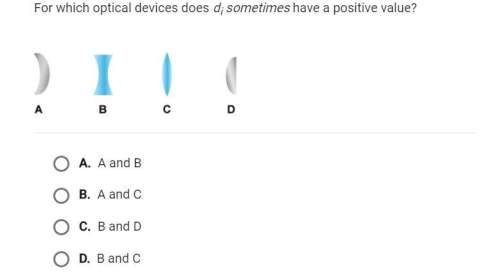
Physics, 25.02.2020 17:25, harmonypowers7656
Two charges are rigidly attached to the x-axis. A 3 µC charge is at the origin and a −5 µC charge is placed at x = 40 cm. Find where a third charge must be placed so that the net force it experiences is zero

Answers: 3
Other questions on the subject: Physics

Physics, 22.06.2019 04:30, angie249
The pressure increases by 1.0 x 104 n/m^2 for every meter of depth beneath the surface of the ocean. at what depth does the volume of a pyrex (bulk modulus 2.6 x 1010n/m^2) glass cube, 9.8 x 10^−2m on an edge at the ocean's surface, decrease by 7.5 x 10−10m^3? explain the formula beyond this point: p=1.0x10^4, b=2.6x10^10, l=9.8x10^−2, delta v=7.5x10^−10. at some point l needs to be cubed. why p is divided by delta v?
Answers: 2

Physics, 22.06.2019 07:00, andrespiperderc
Suppose while hauling rocks, you accidentally drop one. it breaks apart in flat, planar sections. what type of rock did you just drop? 20 points
Answers: 3

Physics, 22.06.2019 11:00, flores1717
Positrons are spontaneously emitted from the nuclei of
Answers: 1

Physics, 22.06.2019 17:50, manou76
Two identical stars with mass m orbit around their center of mass. each orbit is circular and has radius r, so that the two stars are always on opposite sides of the circle. (a) find the gravitational force of one star on the other. (b) find the orbital speed of each star and the period of the orbit. (c) how much energy would be required to separate the two stars to infinity?
Answers: 1
Do you know the correct answer?
Two charges are rigidly attached to the x-axis. A 3 µC charge is at the origin and a −5 µC charge is...
Questions in other subjects:

Social Studies, 21.01.2021 02:10



Arts, 21.01.2021 02:20






Mathematics, 21.01.2021 02:20







